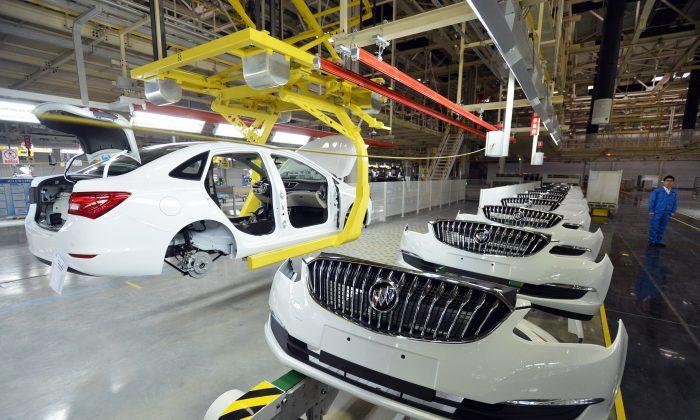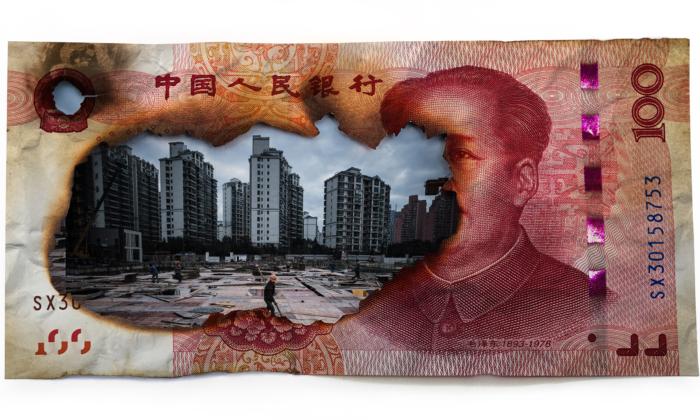Chinese passenger car sales increased significantly in July compared to last year—the fastest growth rate in more than three years.
The impressive acceleration temporarily heads off concerns at global automakers about growth—particularly the U.S. auto market. But China’s sales surge becomes less promising due to last year’s dismal economic backdrop and the fact that most of the sales growth is driven by government stimulus.
Sales of passenger vehicles jumped 26 percent in July from the prior year to 1.6 million units, sending the combined year-to-date growth rate to under 10 percent, according to data from the China Association of Automobile Manufacturers (CAAM) released last week. The 1.6 million figure encompasses auto sales of both foreign and domestic marques.
Market Not as Rosy as Numbers Indicate
With last July’s weak sales being an outlier, July 2016 auto sales were expected to bounce.
Last summer, the Chinese financial market witnessed its biggest equities downturn since the financial crisis. In July 2015, the Shanghai Composite Index declined 14 percent, sapping consumer confidence and eroding spending power. Auto sales during July 2015 reflected those sentiments, with deliveries at 1.52 million units, a 7.1 percent drop compared to 2014.
Further bifurcation of the data revealed that majority of passenger car sales—70 percent—were cars with engine displacement of 1.6 liters or lower. Sales of these small-engine cars rose 38.6 percent in July versus the previous year.
But the figures are artificially inflated due to government incentives. Buyers of these small-displacement cars benefited from a 50-percent purchase tax discount, part of China’s auto stimulus plan put in place since October 2015 after three months of disappointing auto sales dating back to last July. The incentive reduced the nationwide 10 percent purchase tax to 5 percent on new vehicles.
With middle class consumers opting for small-displacement vehicles, the vast majority of the remaining purchases were for larger SUVs. Of July vehicle sales, SUVs made up 35 percent of the total passenger vehicle sales, a 45 percent year-over-year jump.
Auto sales growth is expected to flat-line towards the end of the year, as China’s lackluster economic growth prospects could put pressure on vehicle sales going forward. Economic indicators released over the last two weeks, from inflation data to private investments, all point to an accelerating economic slowdown for the rest of 2016.
Some analysts worry that government tax incentives force consumers to accelerate purchase decisions before the incentives expire, artificially generating more demand in the present at the expense of future sales. A similar program was implemented in the U.S Department of Transportation in 2009—called “Cash for Clunkers”—which produced short-lived gains in auto sales during July and August 2009, at the expense of the following seven months which saw vehicle sales crater.
GM, Ford in China
General Motors vehicle sales by its own brands and those of its Chinese joint venture partners rose 18 percent to a record 270,529, bringing year-to-date totals to more than 2 million units. Buick, Cadillac and Baojun brands were the chief drivers of growth.
Ford Motor Co. sales also rose 15 percent to 88,189 vehicles. The increase was substantially all due to sales of small cars built by joint-ventures Changan Ford and Jiangling Motors. Sales of imported Fords, such as the Ford Mustang performance car and Lincoln-branded luxury vehicles, dropped 64 percent in July.
Both GM and Ford are facing margin pressures in China.
With the Chinese economy in flux, consumers have pivoted to cheaper cars from the Chinese domestic automakers. Once dismissed as cheap knock offs of foreign vehicles, Chinese domestic automakers have improved their products enough to compete adequately against and take market share away from the foreign brands.
That has spurred GM to create the low-margin Baojun, a China-only GM brand positioned as an affordable alternative to domestic automakers. Small cars from Baojun may drive volume, offset by sales of higher margin vehicles from Buick and Cadillac.





